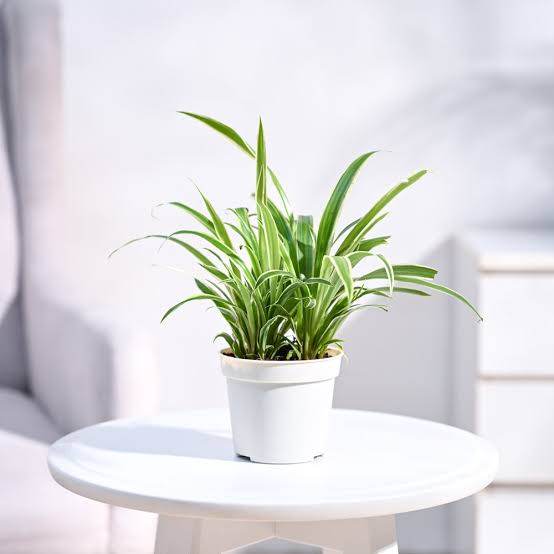If you’re searching for a low-maintenance, stylish, and air-purifying houseplant, look no further than the spider plant. Known for its arching green-and-white striped leaves and adorable “baby” offshoots, the spider plant has been a household favorite in the United States, United Kingdom, and Canada for decades. But here’s the twist—discovering how to care for a spider plant can truly change your space by adding fresh energy, improving air quality, and giving your home a natural, modern vibe.Let’s dive into why spider plants are so beloved and how you can keep yours thriving with ease.🌿 Why Choose a Spider Plant?Beginner-friendly: Spider plants are forgiving and adapt well to different conditions.Air purifiers: NASA studies show they help reduce indoor air pollutants.Decorative charm: Their cascading leaves and baby “spiderettes” look stunning in hanging baskets or shelves.Pet-friendly: Unlike many houseplants, spider plants are non-toxic to cats and dogs.🌞 Light RequirementsSpider plants prefer bright, indirect light. A spot near a sunny window is ideal, but they can also tolerate lower light conditions.👉 Pro tip: Avoid direct midday sun, which can scorch their leaves. East- or west-facing windows work perfectly.💧 Watering Spider PlantsThe number-one rule when learning how to care for a spider plant is don’t overwater.Water once the top inch of soil feels dry.Use room-temperature water to avoid shocking the roots.Ensure the pot has drainage holes to prevent root rot.👉 Fun fact: Spider plants are a little sensitive to chemicals in tap water. If possible, use filtered water or let tap water sit overnight before watering.🌱 Soil and RepottingSpider plants thrive in a light, well-draining potting mix. A peat-based or all-purpose indoor plant soil works well.Repot every 1–2 years when the roots begin to crowd the pot.Choose a pot that’s only 1–2 inches larger in diameter to avoid waterlogging.🍃 FertilizingFeed your spider plant during its active growing season (spring and summer):Use a balanced liquid houseplant fertilizer every 2–3 weeks.Cut back in fall and winter when growth slows.🌸 Propagation: Multiply Your GreeneryOne of the joys of caring for a spider plant is its ability to produce baby plants, or “spiderettes.”Wait until spiderettes have developed small roots.Snip them off and place them in water or soil.Within weeks, you’ll have a brand-new spider plant to gift or decorate with!🪴 Styling Your Space with Spider PlantsHere’s how spider plants can transform your home:Hanging baskets: Let the leaves and spiderettes cascade beautifully.Bookshelf accent: Add greenery without taking up much space.Bathroom plant: They thrive in humid spaces, making bathrooms perfect.Work desk refresh: A small spider plant can brighten your workspace and lift your mood.💡 Troubleshooting Common IssuesBrown tips: Usually caused by fluoride in tap water or underwatering. Switch to filtered water and trim tips.Yellow leaves: Often a sign of overwatering—check the soil before watering again.Slow growth: Try moving the plant to brighter light or giving it a nutrient boost.🎉 ConclusionIt’s easy to see why this hardy houseplant has stayed trendy for generations. Discovering how to care for a spider plant can change your space—bringing in fresh air, vibrant greenery, and natural style without the stress of a high-maintenance routine.Whether you place it in a hanging basket, propagate its cute spiderettes, or simply let it brighten a corner of your living room, the spider plant proves that sometimes the simplest plants make the biggest impact. 🌿✨

